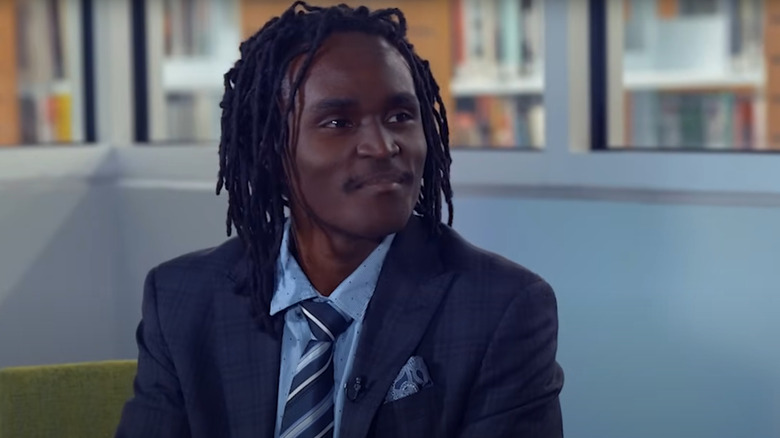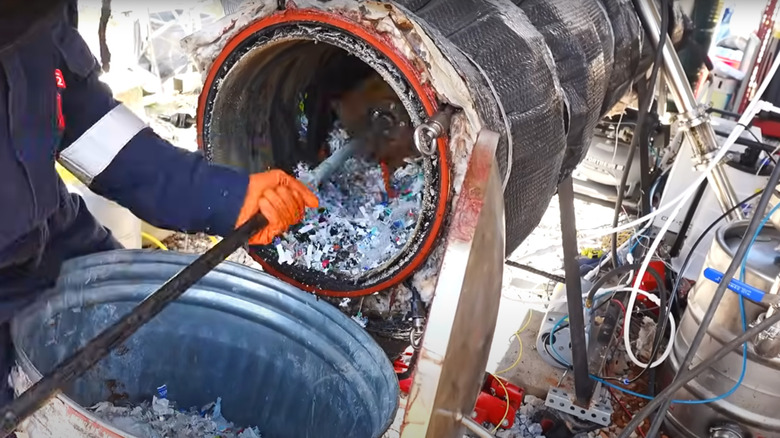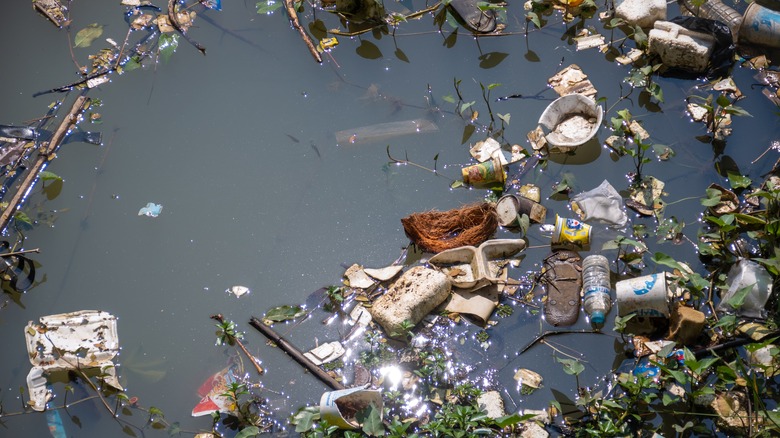A Young Inventor Is Turning Plastic Into A Fuel Called 'Plastoline' - Here's How
"For as long as I walk this earth, there will be no such thing as plastic waste, only untapped potential energy." This quote, stated by young inventor Julian Brown on his company's website, NatureJab, is a lofty promise. A future without the overwhelming presence and harm that plastic waste causes can seem too good to be true. Brown has a solution, though. He has created a way to turn plastic waste into usable fuel referred to as plastoline.
Though plastics only really started becoming prevalent in daily life post-World War II, the waste caused by them has quickly become a crisis. Since plastic is never destroyed but only breaks down into smaller and smaller pieces, it has spread across our world. Plastic hide invisibly in the oceans and drinkable water sources, polluting them. That pollution kills millions of animals each year. Microplastics have even been found in newborn human babies' first stool.
Julian Brown, who is only 22 years old, has quickly gained attention for his solar-powered plastoline invention that is meant to combat the plastic waste problem. Through a process called microwave pyrolysis, he has developed a fuel from plastic that can be made into gasoline, jet fuel, and even a clean diesel fuel alternative. Not only that, but according to him, he is only just getting started.
The plastoline invention process
When Julian Brown was a senior in high school, he suffered a debilitating hand injury. Unable to do things he usually enjoyed, he turned his focus to innovation. He began to research pyrolysis. Traditional pyrolysis uses indirect flame for power — not exactly the most unexpected energy sources – Brown wanted better efficiency by using microwaves. After his first Mark I reactor, he moved on to Mark II. This focused on fixing leaking problems present in the Mark I.
Though Mark III had design problems which made it not last as long as the others, certain design points like its horizontal shape were key for Brown to build off of for future iterations. The Mark IV reactor lived up to Brown's expectations, working well and efficiently, as well as providing a good base he can scale from. He is now in development of the Microwave Pyrolysis Reactor Mark V.
This technology is currently patent pending, and by using grants to fund the development, Brown is pushing this innovation forward. His plastoline has even been tested by industry professionals, and it's already being used in cars to prove that it works. Brown announced that he has plans to soon test the plastoline at a Nissan dealership in a Dodge Scat Pack.
Why this is important to combat plastics
Julian Brown's plastoline invention could be critical in the fight against the plastic pollution crisis. For a bit of reference, nearly half of all plastics used today are single-use plastics — things that get used very briefly, typically for less than an hour, and then get thrown away. For example, these can take the form of grocery or retail store bags and fast-food containers. The problem is, even if they're tossed in the garbage, they are never actually gone.
Now, the planet is facing a plastic waste and microplastic crisis. Recent data reveals that 8 million tons of plastic waste ends up in the ocean and off the coasts each year alone. And microplastics — plastics that have been broken down so finely that they are smaller than half a centimeter — have been found all the way from the heights of Mount Everest to the dark depths of the Mariana Trench.
Sea animals easily get entangled and strangled in plastics. Land animals will accidentally ingest plastic which can result in their deaths. And if that's not close enough to home for you, microplastics end up in foods that humans consume, including meat. Microplastics have been found inside people, including in the brain, the testicles, the heart, stomach, and placenta. Given the scale of this crisis, Brown's invention gives a glimmer of hope. If plastic waste is able to be turned into usable, clean fuel, then there is a brighter future for the ecosystems, animals, and humans.


